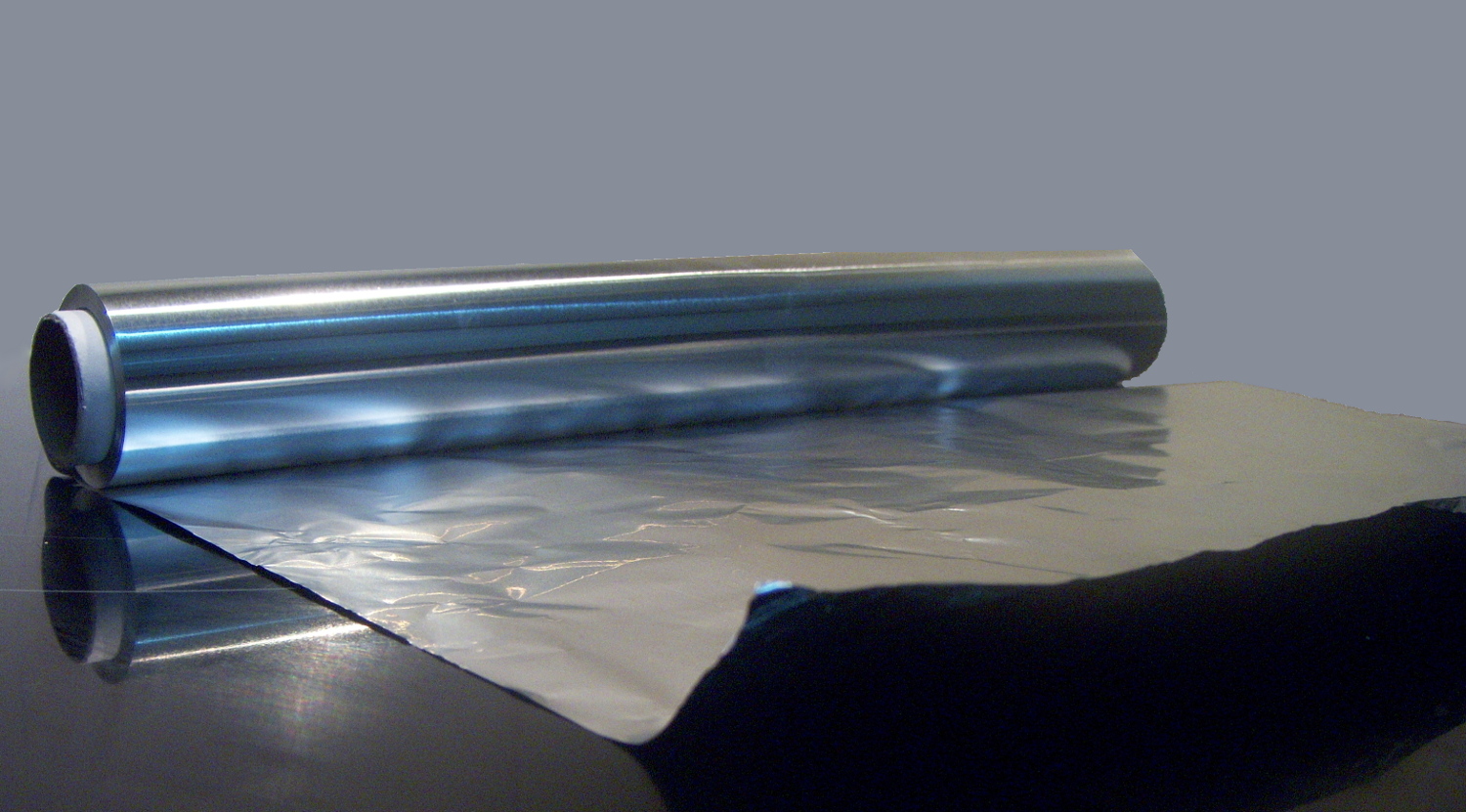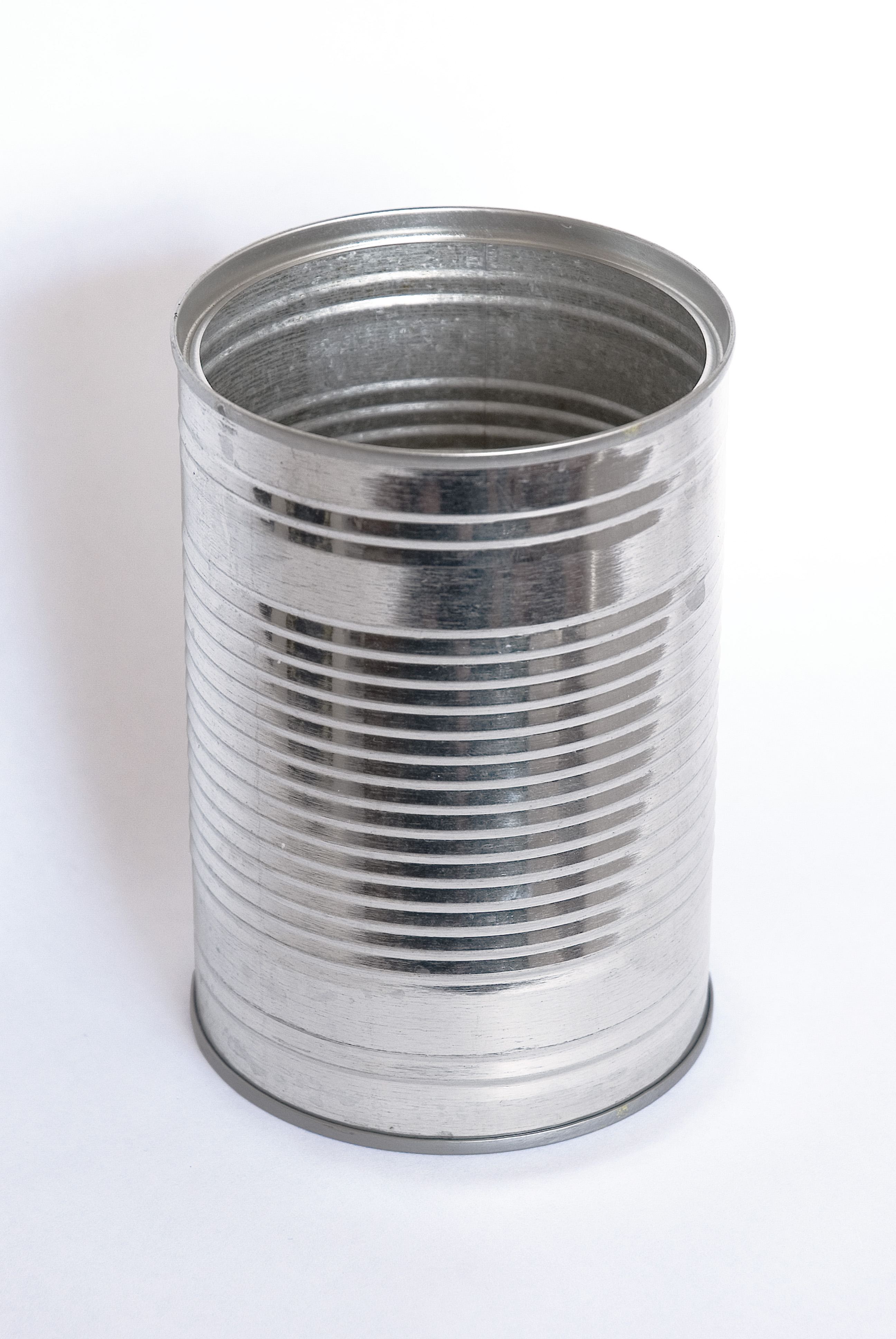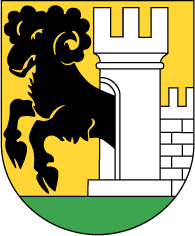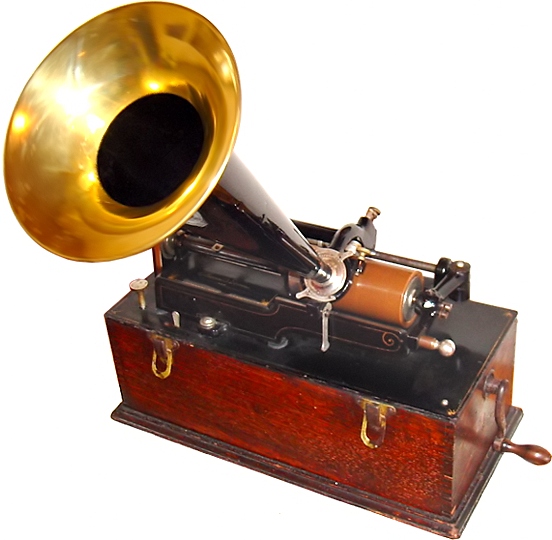|
Aluminum Foil
Aluminium foil (or aluminum foil in North American English; often informally called tin foil) is aluminium prepared in thin metal leaves with a thickness less than ; thinner gauges down to are also commonly used. Standard household foil is typically thick, and heavy duty household foil is typically . The foil is pliable, and can be readily bent or wrapped around objects. Thin foils are fragile and are sometimes laminated with other materials such as plastics or paper to make them stronger and more useful. Annual production of aluminium foil was approximately in Europe and in the U.S."Foil & Packaging" . The Aluminum Association (USA). in 2003. Approximately 75% of aluminium foil is used for [...More Info...] [...Related Items...] OR: [Wikipedia] [Google] [Baidu] |
Manual Of Style
A style guide or manual of style is a set of standards for the writing, formatting, and design of documents. It is often called a style sheet, although that term also has Style sheet (other), multiple other meanings. The standards can be applied either for general use, or be required usage for an individual publication, a particular organization, or a specific field. A style guide establishes standard wikt:style#Noun, style requirements to improve communication by ensuring wikt:consistency#Noun, consistency both within a document, and across multiple documents. Because practices vary, a style guide may set out standards to be used in areas such as punctuation, capitalization, citing sources, formatting of numbers and dates, Table (information), table appearance and other areas. The style guide may require certain best practices in writing style, usage, Composition (language), language composition, Composition (visual arts), visual composition, orthography, and typogra ... [...More Info...] [...Related Items...] OR: [Wikipedia] [Google] [Baidu] |
Tin Can
A steel can, tin can, tin (especially in British English, Australian English, Canadian English and South African English), steel packaging, or can is a container for the distribution or storage of goods, made of thin metal. Many cans require opening by cutting the "end" open; others have removable covers. They can store a broad variety of contents: food, beverages, oil, chemicals, etc. Steel cans are made of tinplate (tin-coated steel) or of tin-free steel. In some dialects, even aluminium cans are called "tin cans". Steel cans are highly recyclable, unlike materials like plastic, with around 65% of steel cans being recycled. History The tin canning process was conceived by the Frenchman Philippe de Girard, who got a British merchant Peter Durand to patent the idea in 1810. The canning concept was based on experimental food preservation work in glass containers the year before by the French inventor Nicholas Appert. Durand did not pursue food canning, but, ... [...More Info...] [...Related Items...] OR: [Wikipedia] [Google] [Baidu] |
Life Savers
Life Savers (stylized as LifeSavers) is an American brand of ring-shaped hard and soft candy. Its range of mints and fruit-flavored candies is known for its distinctive packaging, coming in paper-wrapped aluminum foil rolls. Candy manufacturer Clarence Crane of Garrettsville, Ohio (father of the poet Hart Crane) invented the brand in 1912 as a "summer candy" that could withstand heat better than chocolate. The candy's name is due to the fact that its shape resembles that of a traditional ring-style life preserver also known as a "life saver". After registering the trademark, Crane sold the rights to his Pep-O-Mint peppermint candy to Edward John Noble for $2,900. Instead of using cardboard rolls, which were not very successful, Noble created tin-foil wrappers to keep the mints fresh. Noble founded the Life Savers and Candy Company in 1913 and significantly expanded the market for the product by installing Life Savers displays next to the cash registers of restaurants and groc ... [...More Info...] [...Related Items...] OR: [Wikipedia] [Google] [Baidu] |
Toblerone
Toblerone ( , ) is a Swiss chocolate brand produced in Bern. Toblerone is known for its distinctive shape, a series of joined triangular prisms and lettering engraved in the chocolate. Since 2012, the brand has been owned by US company Mondelez International (successor of Kraft Foods Inc., which had acquired Toblerone from owner Jacobs Suchard in 1990). History The Tobler chocolate factory was founded in 1899 by Emil Baumann & Theodor Tobler (1876–1941) in Bern. In 1908, Emil Baumann, the cousin of Theodor Tobler, created the unique recipe consisting of milk chocolate including nougat, almonds, and honey. Theodor Tobler came up with the distinctive triangular shape and packaging. The product's name is a portmanteau combining Tobler's name with the Italian word '' torrone'' (a type of nougat). The triangular shape of the Matterhorn in the Swiss Alps/ Italian Alps is commonly believed to have given Theodor Tobler his inspiration for the shape of Toblerone. However, a ... [...More Info...] [...Related Items...] OR: [Wikipedia] [Google] [Baidu] |
Triangular Prism
In geometry, a triangular prism is a three-sided prism; it is a polyhedron made of a triangular base, a translated copy, and 3 faces joining corresponding sides. A right triangular prism has rectangular sides, otherwise it is ''oblique''. A uniform triangular prism is a right triangular prism with equilateral bases, and square sides. Equivalently, it is a polyhedron of which two faces are parallel, while the surface normals of the other three are in the same plane (which is not necessarily parallel to the base planes). These three faces are parallelograms. All cross-sections parallel to the base faces are the same triangle. As a semiregular (or uniform) polyhedron A right triangular prism is semiregular or, more generally, a uniform polyhedron if the base faces are equilateral triangles, and the other three faces are squares. It can be seen as a truncated trigonal hosohedron, represented by Schläfli symbol t. Alternately it can be seen as the Cartesian product of a ... [...More Info...] [...Related Items...] OR: [Wikipedia] [Google] [Baidu] |
Rhine Falls
, photo = File:SBB RABe 514 DTZ Rheinfall.jpg , photo_width = 280 , photo_caption = Rhine Falls with Rheinfall Bridge and Laufen Castle , location = On the border between the cantons of Schaffhausen and Zürich next to Schaffhausen, in northern Switzerland , coordinates = , watercourse = Rhine , type = Segmented Block , elevation = , height = , width = , number_drops = 1 , average_flow = during winter, during summer , world_rank = The Rhine Falls (german: Rheinfall , a singular noun) is a waterfall located in Switzerland and the most powerful waterfall in Europe. The falls are located on the High Rhine on the border between the cantons of Schaffhausen (SH) and Zürich (ZH), between the municipalities of Neuhausen am Rheinfall (SH) and Laufen-Uhwiesen/ Dachsen (ZH), next to the town of Schaffhausen in northern Switzerland. They are wide and high. In the winter months, the average water flow is , while in the s ... [...More Info...] [...Related Items...] OR: [Wikipedia] [Google] [Baidu] |
Schaffhausen
Schaffhausen (; gsw, Schafuuse; french: Schaffhouse; it, Sciaffusa; rm, Schaffusa; en, Shaffhouse) is a town with historic roots, a municipality in northern Switzerland, and the capital of the canton of the same name; it has an estimated population of 36,000 It is located right next to the shore of the High Rhine; it is one of four Swiss towns located on the northern side of the Rhine, along with , the historic , and . The old town has many fine Renaissance era buildings decorated with exterior frescos and sculpture, as well as the old canton fortress, the ''Munot''. Schaffhausen is also a railway junction of Swiss and German rail networks. One of the lines connects the town with the nearby Rhine Falls in , Europe's largest waterfall, a tourist attraction. The official language of Schaffhausen is (the Swiss variety of Standard) German, but the main spoken language is the local variant of the Alemannic Swiss German dialect. Name The town is first mentioned in ... [...More Info...] [...Related Items...] OR: [Wikipedia] [Google] [Baidu] |
Switzerland
; rm, citad federala, links=no). Swiss law does not designate a ''capital'' as such, but the federal parliament and government are installed in Bern, while other federal institutions, such as the federal courts, are in other cities (Bellinzona, Lausanne, Lucerne, Neuchâtel, St. Gallen a.o.). , coordinates = , largest_city = Zurich , official_languages = , englishmotto = "One for all, all for one" , religion_year = 2022 , religion_ref = , religion = , demonym = , german: link=no, Schweizer/Schweizerin, french: link=no, Suisse/Suissesse, it, svizzero/svizzera or , rm, Svizzer/Svizra , government_type = Federal assembly-independent directorial republic , leader_title1 = Federal Council , leader_name1 = , leader_title2 = , leader_name2 = Viktor Rossi , legislature = Federal Assembly , upper_house = Counci ... [...More Info...] [...Related Items...] OR: [Wikipedia] [Google] [Baidu] |
Kreuzlingen
Kreuzlingen is a municipality in the district of Kreuzlingen in the canton of Thurgau in north-eastern Switzerland. It is the seat of the district and is the second-largest city of the canton, after Frauenfeld, with a population of about 22,000. Together with the adjoining city of Konstanz just across the border in Germany, Kreuzlingen is part of the largest conurbation on Lake Constance with a population of almost 120,000. History The name of the municipality stems from the Augustinian monastery ''Crucelin'', later Kreuzlingen Abbey. It was founded in 1125 by the Bishop of Constance Ulrich I. In the Swabian War and the 30 Years' War after the siege of Constance by Swedish troops, the Augustinian monastery was burned down by the people of Constance, who blamed the monks for having supported the enemy. In 1650, the monastery was rebuilt in its present location. With secularization in 1848, the buildings became a teachers' school. The chapel became a Catholic Church. The ar ... [...More Info...] [...Related Items...] OR: [Wikipedia] [Google] [Baidu] |
Phonograph Cylinders
Phonograph cylinders are the earliest commercial medium for recording and reproducing sound. Commonly known simply as "records" in their era of greatest popularity (c. 1896–1916), these hollow cylindrical objects have an audio recording engraved on the outside surface, which can be reproduced when they are played on a mechanical cylinder phonograph. In the 1910s, the competing disc record system triumphed in the marketplace to become the dominant commercial audio medium. Early development In December 1877, Thomas Edison and his team invented the phonograph using a thin sheet of tin foil wrapped around a hand-cranked, grooved metal cylinder. Tin foil was not a practical recording medium for either commercial or artistic purposes, and the crude hand-cranked phonograph was only marketed as a novelty, to little or no profit. Edison moved on to developing a practical incandescent electric light, and the next improvements to sound recording technology were made by others. ... [...More Info...] [...Related Items...] OR: [Wikipedia] [Google] [Baidu] |
Ductility
Ductility is a mechanical property commonly described as a material's amenability to drawing (e.g. into wire). In materials science, ductility is defined by the degree to which a material can sustain plastic deformation under tensile stress before failure. Ductility is an important consideration in engineering and manufacturing. It defines a material's suitability for certain manufacturing operations (such as cold working) and its capacity to absorb mechanical overload.. Some metals that are generally described as ductile include gold and copper. However, not all metals experience ductile failure as some can be characterized with brittle failure like cast iron. Polymers generally can be viewed as ductile materials as they typically allow for plastic deformation. Malleability, a similar mechanical property, is characterized by a material's ability to deform plastically without failure under compressive stress. Historically, materials were considered malleable if they wer ... [...More Info...] [...Related Items...] OR: [Wikipedia] [Google] [Baidu] |
Tin Foil
Tin foil, also spelled tinfoil, is a thin foil made of tin. Tin foil was superseded after World War II by cheaper and more durable aluminium foil, which is still referred to as "tin foil" in many regions (an example of a misnomer). History Foil made from a thin leaf of tin was commercially available before its aluminium counterpart. In the late 19th century and early 20th century, tin foil was in common use, and some people continue to refer to the new product by the name of the old one. Tin foil is stiffer than aluminium foil. It tends to give a slight tin taste to food wrapped in it, which is a major reason it has largely been replaced by aluminium and other materials for wrapping food. Because of its corrosion resistance, oxidation resistance, availability, low cost, low toxicity, and slight malleability, tin foil was used as a filling for tooth cavities prior to the 20th century. The first audio recordings on phonograph cylinder Phonograph cylinders are the earlie ... [...More Info...] [...Related Items...] OR: [Wikipedia] [Google] [Baidu] |







.jpg)